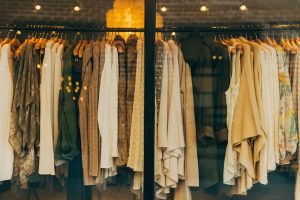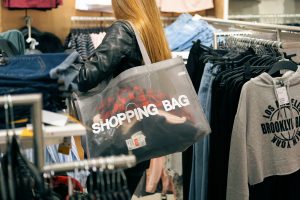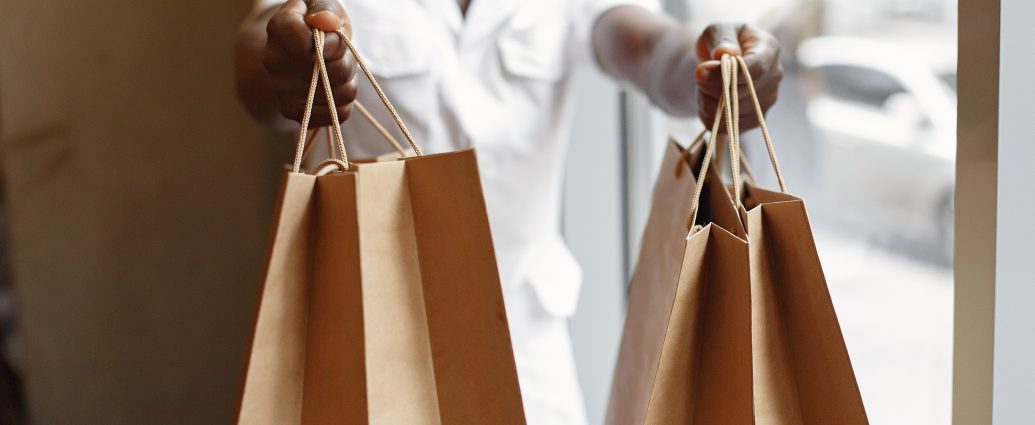‘Sustainable’ has become a buzzword in the fashion industry. But how systems and production become sustainable has not yet been worked out. We know we need to do more to tackle climate change and now, more than ever, we are exposed to constant encouragement to shop sustainably. There is so much information on how to do it “right” but it feels like there is a key gap in the conversation – how to make fashion sustainable if it can’t include everyone? While activists and sustainable “gurus” push us to shop better, sustainable fashion is currently not inclusive nor accessible to everyone.
If you search sustainable fashion on Instagram, you will find your feed is filled with a very similar aesthetic. White and slim women showing off their latest charity shop steal or luxurious ethical brand buy. Good for them but the “movement” is saturated by this look and that doesn’t leave much room to discuss the obstacles in sustainable fashion from those who are affected by it most.
Inclusivity
Michelle Hopewell (30), an actress from Edinburgh, has been trying to take steps to shop better after consuming fast fashion for years. She says the two biggest issues she faces when trying to shop sustainability are sizing and price.
“If they [sustainable brands] happen to have my size it’s really expensive and if it’s affordable then they don’t have my size and it’s pretty much an endless dance from there!”
It’s not surprising when the plus size clothing market makes up only 22% even though the average size is 16. It’s clear all around the board, more could be done to be size inclusive with a clear demand companies should be making the most of.
When looking at inclusive sizing on sustainable fashion sites, such as Thoughtful Clothing, it really only ranges up to a size 18. There is a feeling of exclusion from plus size bloggers, when they discuss, on social media, sustainable fashion and second hand shopping, which is often offered as an alternative.
Inclusivity is crucial if we want to open sustainable shopping to everyone. I believe brands need to do more to say, “Hey! You can do this too!”. The influencers they work with, people on panels and in the media who talk about sustainable shopping often, to me, appear to be white middle class who can afford better quality clothes and push that agenda and that doesn’t pull me in to listen or read. In terms of further inclusivity, Michelle highlights there is an anti-blackness with many brands she sees, “sustainable or otherwise”, using majority of white models and a “specific aesthetic that is very black, BIPOC, LGBTQ+, disabled excluding” and thinks brands should try to do more in terms of pricing.
“I think accessibility for sustainable fashion will be about being size inclusive, about addressing the anti-blackness that you find because the emphasis is on selling aspirational white middle classness, and finding a way for there to be affordable options for those from lower income brackets!”

The mindset.
Fast fashion brands are more likely to have a plus, petite and tall ranges. It is easier to access if the customer isn’t ‘average shape/height’. I often know what brands work for my short height so I can buy from them accordingly or prepare to get straps and hems altered. If I am spending between £60-90 on a jumpsuit, I would be apprehensive in paying the extra cash for alterations compared to a cheaper brand such as New Look, where I know what size fits my smaller frame. Then I wonder, is this the right mindset to have?
Abbey Booth, Personal Stylist at Stories With Clothes, Buckinghamshire, encourages her clients to re-work what they have in their wardrobe and buy mindfully.
“It’s the whole picture, looking at what you do with the items that you have, and if you are going to buy, buy mindfully, and really carefully, and do you really need it? Is it going to have longevity, rather than a habit?”
That word “habit” sparks something in me. A reminder of my shopping habit whenever I felt stressed, resulting in my wardrobe bursting at the seams. She goes on to talk about Instagram and how social media encourages people to be part of the ‘trend’- if you don’t have that dress- you’re missing out. It is that mindset, I agree with, that needs to be broken. Maybe if we were to embrace our own style over the need to wear the “latest trend”, it might be easier for us to shop less.

Cost of sustainable fashion.
But this poses many problems for those without huge amounts of disposable income. The alternative to buying new, is to buy second hand. It is a lot easier to do that now with apps like Vinted, Depop and Ebay. That is what sustainable gurus encourage. I am no stranger to second-hand clothes, sometimes it was the only option and if I wanted to get the luxury feeling of buying new, with the price point of sustainable brands, fast fashion was the only way. Wouldn’t it be nice if everyone could have a shot of that as well as knowing they’re shopping ethically? Lucy and Yak supply a wide size and range, handmade in Britain and have a middle of the road price point, probably closer to Topshop prices but much better quality.
Abbey emphasises to me that if clothes are to be made ethically and sustainably, it is going to cost more. She suggests that if supermarkets got on board with sourcing their clothes ethically, the price could be more affordable and and so much more accessible.
“But I think now is the time to do it really, really big and make it. I think it’s just being more accessible. I think also, if a supermarket clothing line, if they launched something that was sustainable, then that would get into the mindset [of shopping sustainably] very quickly.”
Change needs to happen
The truth is, the fast fashion industry cannot go on as it is. The proof of the damage it is having on the environment and the unsuitable working conditions are right in front of us, even in the UK. There is no hiding from it. Sadly, it does not mean that it will change over night. It has been part of public knowledge for years. People still continue to buy from these companies but it is classist and sizeist to blame the shoppers. There is a desperate plea for more accessible sustainable clothes in cost and size that are being silenced over middle class white women shaming their audiences buying from Primark. If we want to stop fast fashion then there needs to be an alternative for everyone. The only way I believe this can happen is to raise these inequalities louder than that H&M pink dress. If you are an activist to shop sustainably, question, are you doing enough for people who aren’t represented in the conversation of ‘sustainable fashion’?
So, to all those ethical brands, sustainable activists and bloggers who fit so well into the ‘clean’ way of shopping, use your platforms for change, for the people who need the system to change. To make sustainable fashion for everyone, everyone needs to be included in the conversation. As Abbey said, “What sort of world do we want to leave our children?”. The doors to sustainable fashion need to be open for everyone. No matter what size or how big or small the wallets are. These are the barriers that need breaking.
Katie Williams
Featured image courtesy of Gustavo Fring on Pexels.


1 Comment